Category: Medical Education
Keywords: app (PubMed Search)
Posted: 4/9/2012 by Rob Rogers, MD
(Updated: 12/17/2025)
Click here to contact Rob Rogers, MD
Well, here is a cool little app that has recently been released. It's an app that can predict what a child's height will be as a mature adult. This is not a joke.
A free mobile application developed by the International Center for Limb Lengthening (ICLL) at the Rubin Institute for Advanced Orthopedics (RIAO) of Sinai Hospital (right in our very own Baltimore) can predict the future mature height and bone lengths of children with the input of basic information.
That's right people. The formula has amazing accuracy and has been studied in many different centers. It's supposedly 97%+ accurate in predicting height.
The Multiplier App, available for Android, iPhone and iPad devices, is based upon the Multiplier Method, a series of formulas used to calculate and predict height and bone length in children. These formulas were developed by a team that included members of the ICLL.
Here is what it looks like. Just click on "Height" (see enclosed jpg image of the app) and then type in the child's birthday and current height in either inches or cm. The formula will then calculate what there predicted height will be.
Very, very cool ( at least I think)
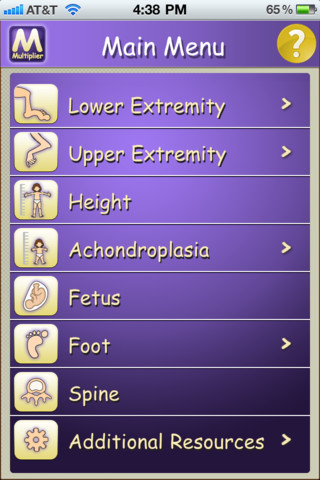
International Center for Limb Lengthening, Rubin Institute for Advanced Orthopedics, Sinai Hospital of Baltimore, Baltimore, Maryland, USA.
Category: Medical Education
Keywords: education, whiteboards (PubMed Search)
Posted: 3/12/2012 by Rob Rogers, MD
(Updated: 12/17/2025)
Click here to contact Rob Rogers, MD
Every heard of the Khan Academy website? If you have, you will instantly recogize what a powerful force this website has become in education. If you haven't, what are you waiting for? Head to http://www.khanacademy.org/ and check it out! This site gets millions of hit PER DAY.
The Khan Academy was developed by, guess who, a guy named Kahn, Salman Kahn. This website is amazing. My kids use it for some of their school work. Trust me, check it out. If you want to know just how good this guy is...check out the size of the check Bill Gates wrote him.
What does this have to do with medical education? The videos put together by Khan utilize a teaching modality called a "whiteboard." This type of teaching technology is changing they way educators deliver material. Programs like Doceri (www.doceri.com) utilize this concept. You can build presentations and teaching materials with audio included.
My pearl for you today is really more of an assignment...go to the two websites and check them out. First, visit the Khan Academy site and then the Doceri site. THIS kind of thing is the future of education...

Category: Medical Education
Keywords: Prezi, Power Point (PubMed Search)
Posted: 2/20/2012 by Rob Rogers, MD
(Updated: 12/17/2025)
Click here to contact Rob Rogers, MD
Getting tired of the same old Power Point presentations? Getting bored with Apple's Keynote? Looking for something new to excite learners?
Well, you might want to consider using a newer presentation tool, a tool designed to eliminate those boring bullet points...
Say hello to Prezi...
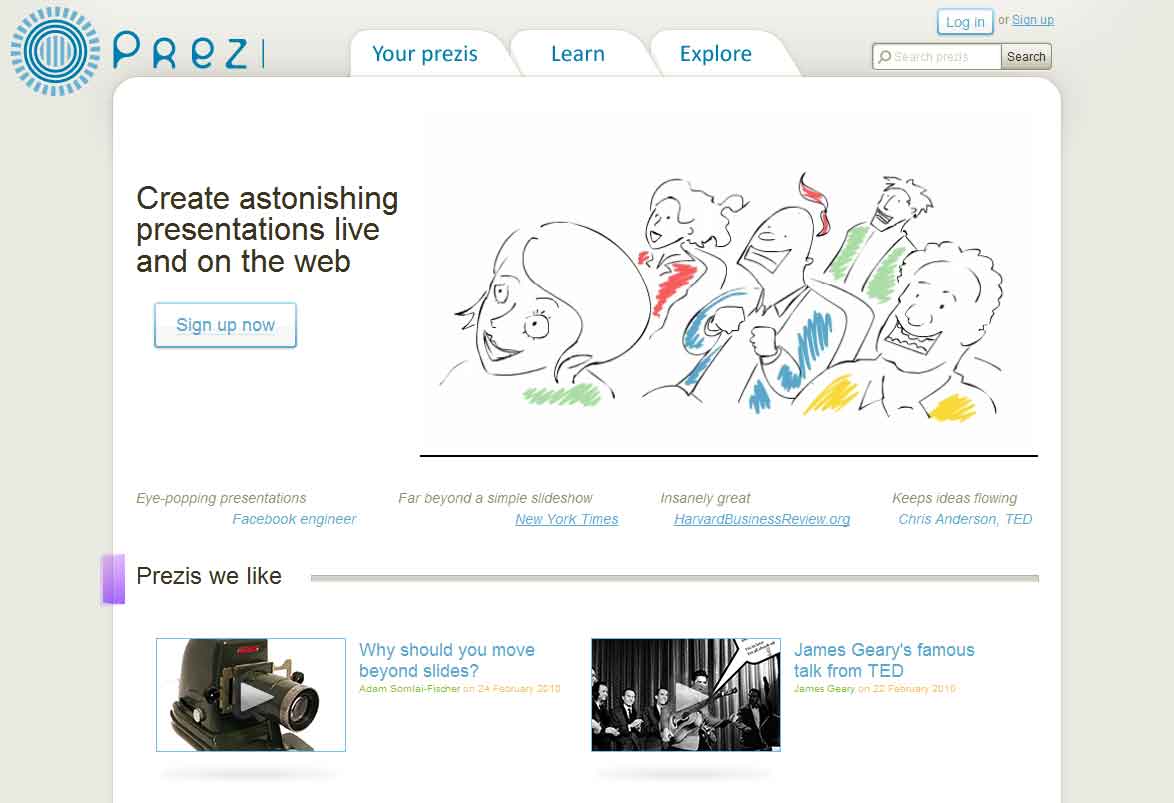
This really cool presentation tool allows you place all of your content (words, pictures, video, etc) on one canvas and then manipulate the sequence you want to show it in.
Check out the website and give it a try: www.prezi.com
Simply click on some of the sample Prezi presentations on the site. It's very cool and quite addictive.
ww.prezi.com
Category: Misc
Posted: 10/24/2011 by Rob Rogers, MD
(Updated: 12/17/2025)
Click here to contact Rob Rogers, MD
Weird and Unusual Symptoms
Bet you didn't know that severe and intense pruritus of the nostrils, known as Wartenberg's symptom, is an uncommon but characteristic symptom of a brain tumor.
Etiologies include astrocytoma, glioblastoma, oligodendroglioma, medulloblastoma, and metastatic tumors.
1. Andreev VC, Petkov. Skin manifestations associated with tumors of the brain. Br J Dermatol 1975;92:675
2. Mark Marinella, Pocket Brain of 50 Unusual Symptoms. Blackwell Publishing
Category: Visual Diagnosis
Posted: 9/12/2011 by Rob Rogers, MD
(Updated: 12/17/2025)
Click here to contact Rob Rogers, MD
A 50 year-old patient presents after a self-inflicted eye injury. The patient had taken some type of needle and inserted it into their eye.
What is the diagnosis and what complications might result?
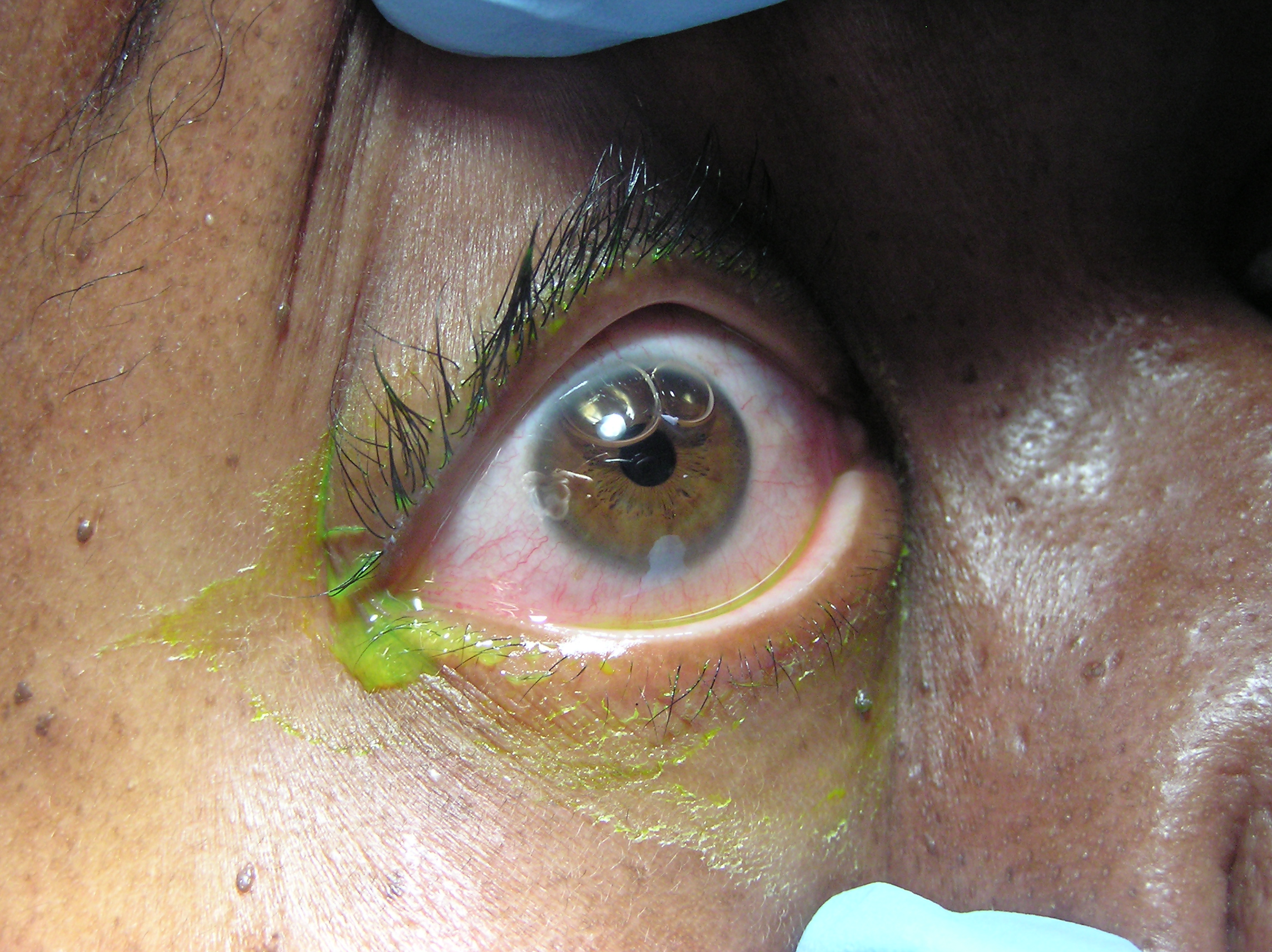
The image shows air bubbles in the anterior chamber. Since air has been introduced into the eye, the patient is at risk for elevated intraocular pressures. In addition, you would need to consider endophthalmitis as a complication.
Category: Visual Diagnosis
Posted: 8/29/2011 by Rob Rogers, MD
(Updated: 12/17/2025)
Click here to contact Rob Rogers, MD
Patient presents with right-sided chest and shoulder pain....
What's the diagnosis?

Herpes Zoster
Category: Medical Education
Keywords: Interns, Emergency Medicine (PubMed Search)
Posted: 8/1/2011 by Rob Rogers, MD
(Updated: 12/17/2025)
Click here to contact Rob Rogers, MD
In a 1991 article published by Wrenn and Slovis, the ten commandments of emergency medicine are discussed. This is an awesome article and a must read for everyone in EM.
Michelle Lin recently mentioned these on her blog, Academic Life in Emergency Medicine....
The Ten Commandments of Emergency Medicine:
1. Secure the ABC's
2. Consider or give naloxone, glucose, and thiamine
3. Get a pregnancy test
4. Assume the worst
5. Do not send unstable patients to radiology
6. Look for common red flags
7. Trust no one, believe nothing (not even yourself)
8. Learn from your mistakes
9. Do unto others as you would do to your family (and that includes coworkers)
10. When in doubt, always err on the side of the patient
These are great teaching pearls for new interns and for the rest of us as well....
Wrenn, Slovis
Michelle Lin's blog, Academic Life in Emergency Medicine
Category: Vascular
Keywords: Aortic Dissection (PubMed Search)
Posted: 6/20/2011 by Rob Rogers, MD
(Updated: 12/17/2025)
Click here to contact Rob Rogers, MD
There are several complications of acute aortic dissection that emergency physicians must be familiar with.
These include:
*Key Pearl: If a patient with suspected or confirmed acute aortic dissection suddenly arrests consider cardiac tamponade.
Category: Visual Diagnosis
Posted: 6/6/2011 by Rob Rogers, MD
Click here to contact Rob Rogers, MD
A 20 year-old female presents with bilateral neck pain that occurred at rest. No other complaints. See if you can find the subtle clue on the x-ray...
The x-ray shows air in the soft tissue of the right neck and supraclavicular area. Close inspection of the mediastinum reveals subtle air along the heart border. Diagnosis: pneumomediastinum.
Often the first clue of pneumomediastinum is air in the neck and supraclavicular area on plain film. So, always look at the soft tissues on chest x-ray.
Category: Airway Management
Posted: 5/16/2011 by Rob Rogers, MD
(Updated: 12/17/2025)
Click here to contact Rob Rogers, MD
Ever see that patient who shows up in the ED with blue painful toes? You look at the foot (or feet) and quickly determine that clot has embolized into the foot.
What is the differential diagnosis to consider in patients with evidence of embolic phenomenon in the feet (i.e. blue, painful toes)?
Things to consider:
Clearly we can't do the complete workup of embolic foot lesions, and many if not most of these patients will need to be admitted to complete their workup.

Medscape images
http://img.medscape.com/pi/emed/ckb/vascular_surgery/459840-463354-3592.jpg
Category: Medical Education
Posted: 5/2/2011 by Rob Rogers, MD
(Updated: 12/17/2025)
Click here to contact Rob Rogers, MD
I found this neat little pearl on Michelle Lin's blog, Academic Life in Emergency Medicine, and thought it was worth sharing with everyone:
"In my theme of detoxifying malodorous smells in the ED (see Toxic Sock Syndrome and abscess drainage), I recently learned of a new way of masking odors. Imagine the stress on your olfactory nerves from the combined effects of urinary and fecal incontinence from a nursing home patient.
An ingenious nurse proposed nebulizing actual coffee within the room. Unfortunately, our ED was out of coffee at the moment.
Trick of the Trade:
Nebulized orange juice
I only learned of this trick after walking into the patient's very subtly foggy room. About 4 cc of orange juice had been nebulizing for a few minutes. The room smelled a little like a Jamba Juice (a smoothies/ juice shop). Quite pleasant actually. I was shocked to find that it masked the odors quite well."
Thanks for the tip, Michelle. Freshly-squeezed anyone??
Michelle Lin, Academic Life in Emergency Medicine
Category: Infectious Disease
Keywords: infection, cirrhosis (PubMed Search)
Posted: 4/4/2011 by Rob Rogers, MD
(Updated: 12/17/2025)
Click here to contact Rob Rogers, MD
Hemorrhagic bullae in an ill-appearing patient with underlying cirrhosis should prompt consideration for an invasive infection due to Vibrio vulnificus.
V. Vulnificus is a gram negative rod and causes a highly lethal infection in patients with cirrhosis.
Antibiotics for these patients should include coverage for this organism. This should include doxycycline and a third genaration cephalosporin.
1. Evidence-Based Medicine: 500 Clues to Diagnosis and Treatment, Ellerin and Diaz
2. CDC
Category: Visual Diagnosis
Posted: 2/21/2011 by Rob Rogers, MD
Click here to contact Rob Rogers, MD
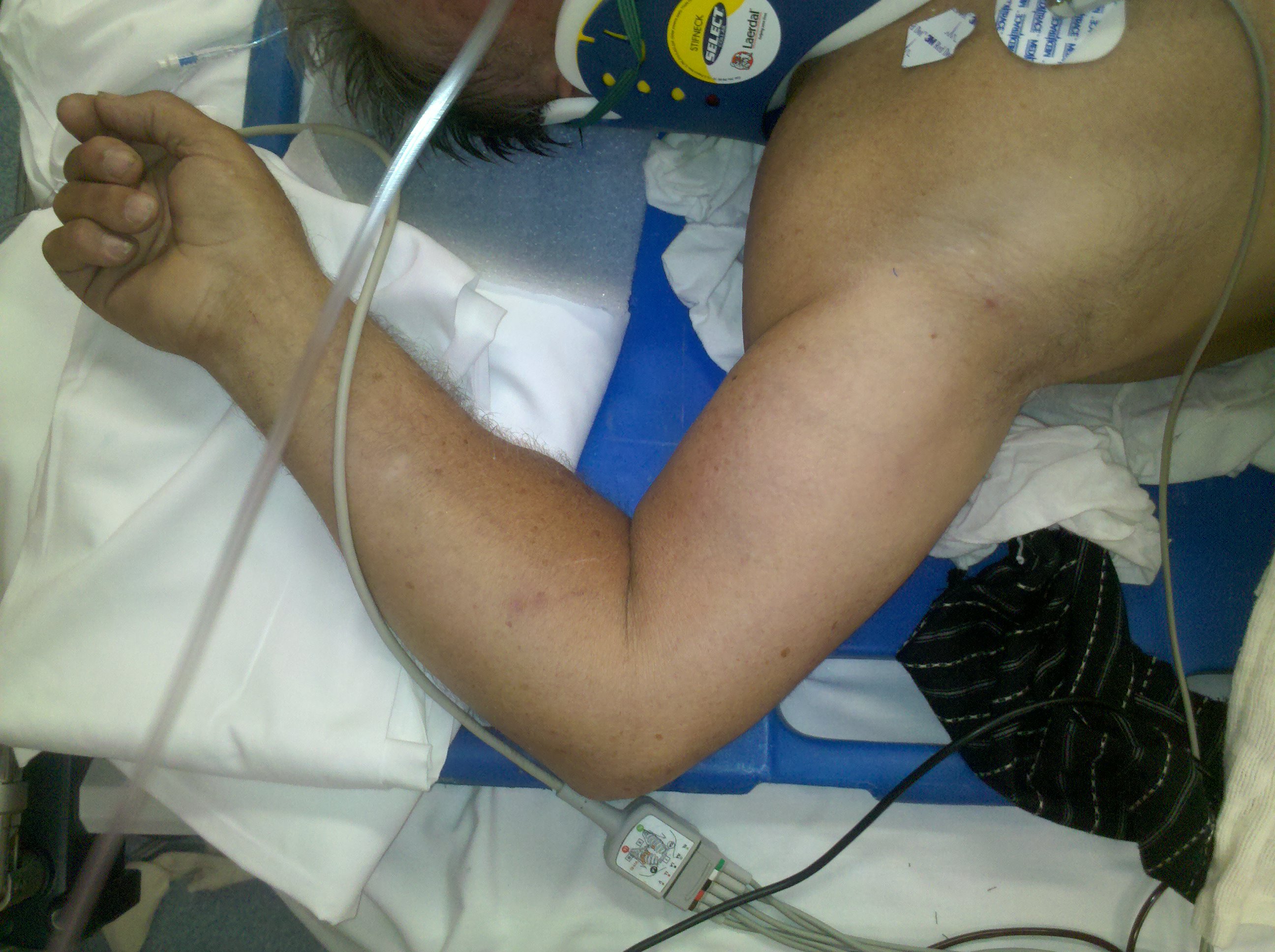
Luxatio Erecta-inferior glenohumeral dislocation
A rare shoulder dislocation caused by a hyperabduction injury to the arm.
Category: Airway Management
Keywords: teaching, NEJM, app (PubMed Search)
Posted: 2/7/2011 by Rob Rogers, MD
(Updated: 12/17/2025)
Click here to contact Rob Rogers, MD
Great resource for teaching in the emergency department....
Here is a great new app that you can use when teaching residents and students in the ED. It's the NEJM app. Great pics, videos, audio, procedures, and articles. And, it's FREE.


Just go to the App store and search "NEJM"
Category: Cardiology
Keywords: Coumadin (PubMed Search)
Posted: 1/24/2011 by Rob Rogers, MD
Click here to contact Rob Rogers, MD
Well, there may finally be a replacement for patients with atrial fibrillation who take warfarin (Coumadin).
In late 2010, the FDA approved the drug Dabigatran (Pradaxa) for use in patients with atrial fibrillation.
Dabigatran is an oral direct thrombin inhibitor that has been approved for stroke prevention in patients with A Fib. The drug does not need monitoring like warfarin, and has been deemed to be safer than warfarin.
Be on the lookout for Dabigatran...
Category: Neurology
Keywords: Image, CT scan, head trauma (PubMed Search)
Posted: 1/10/2011 by Rob Rogers, MD
Click here to contact Rob Rogers, MD
FILE RESEND. This was tested via email and will hopefully work. I apologize for errors - Dlemkin (webmaster)
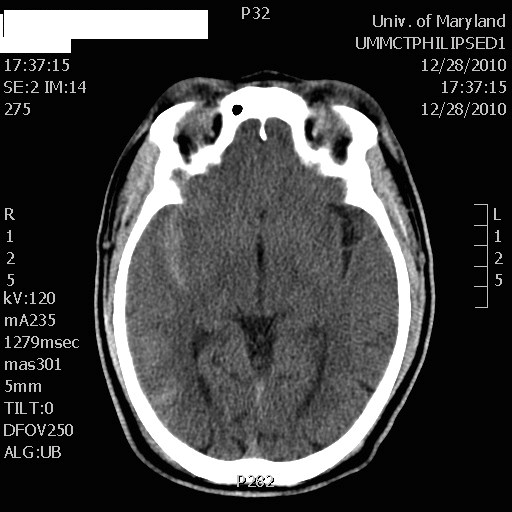
What is the diagnosis? (DON'T LOOK DOWN AT THE ANSWER)
50 year-old male prisoner s/p assault, + LOC
CT shows right-sided traumatic subarachnoid hemorrhage
Category: Vascular
Posted: 1/3/2011 by Rob Rogers, MD
(Updated: 12/17/2025)
Click here to contact Rob Rogers, MD
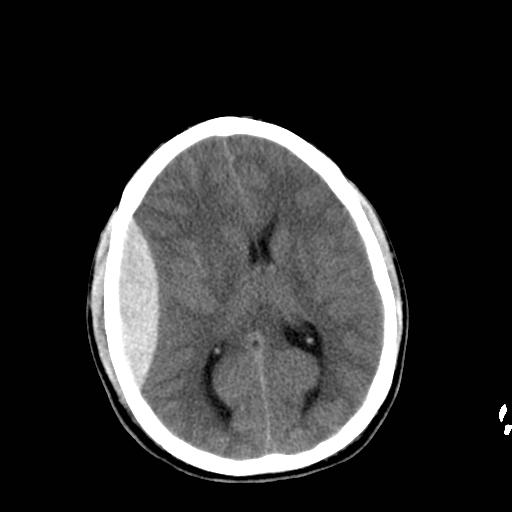
60 year-old male s/p assault. + LOC. Awake and normal neuro examination on arrival. Deteriorates in the ED after about an hour....
Diagnosis: Epidural Hematoma
Category: Vascular
Keywords: subarachnoid hemorrhage (PubMed Search)
Posted: 12/13/2010 by Rob Rogers, MD
(Updated: 12/17/2025)
Click here to contact Rob Rogers, MD
Diagnosing Subarachnoid Hemorrhage-6 Pitfalls
1. Subarachnoid hemorrhage (SAH) doesn't always present as the "worst ever" headache. Don't most of our patients say their headache is the worst headache anyway? Be suspicious of the diagnosis if your patient has acute onset of an unusual or atypical headache. Diagnoses starts with the history.
2. The neuro exam may be completely normal in some cases, especially early on.
3. The headache due to SAH may get better with analgesics. This is a huge pitfall. Don't rule this diagnosis out if analgesics help.
4. The CT scan may be negative. Enough said.
5. Be careful with interpretation of the CSF. We all want the number of red cells in tube 4 to be zero. Be careful with this. Although the rbcs may have dropped by 50% from tubes 1 to 4, the diagnosis hasn't been excluded unless the cells clear completely. Although there have been some case reports of SAH with rbcs < 100, this is pretty uncommon.
6. CT Angiography and/or MRI with FLAIR is not a substitute for the lumbar puncture.
Stuart Swadron, Emergency Physicians Monthly
Category: Vascular
Keywords: hypertension (PubMed Search)
Posted: 12/6/2010 by Rob Rogers, MD
(Updated: 12/17/2025)
Click here to contact Rob Rogers, MD
Got Symptomatic Hypertension? Why not try Fenoldopam?
Fenoldopam is a rapid-acting vasodilator.
Dosing (Adult): After a starting dose of 0.1 to 0.3 mcg/kg/minute, the dose is titrated at 15 minute intervals, depending on the BP response. May be increased in increments of 0.05 to 0.1 mcg/kg/minute every 15 minutes until target blood pressure is reached. Maximal infusion rate reported in clinical studies: 1.6 mcg/kg/minute.
Onset/duration: 5-10 minutes/~ 1 hour.
The Clinician's Ultimate Reference
Category: Misc
Keywords: Epinephrine (PubMed Search)
Posted: 11/15/2010 by Rob Rogers, MD
(Updated: 12/17/2025)
Click here to contact Rob Rogers, MD
Dose of Epinephrine for Patients with Anaphylaxis
Many of us are familiar with 0.3-0.5 mg IM of 1:1,000. Important to give IM and not SC.
In severe cases, consider IV Epinephrine:
Corey Slovis, Vanderbilt University
Hans House, University of Iowa Emergency Medicine Residency,
USC Essentials Course 2010 (Mel Herbert and USC Faculty)
